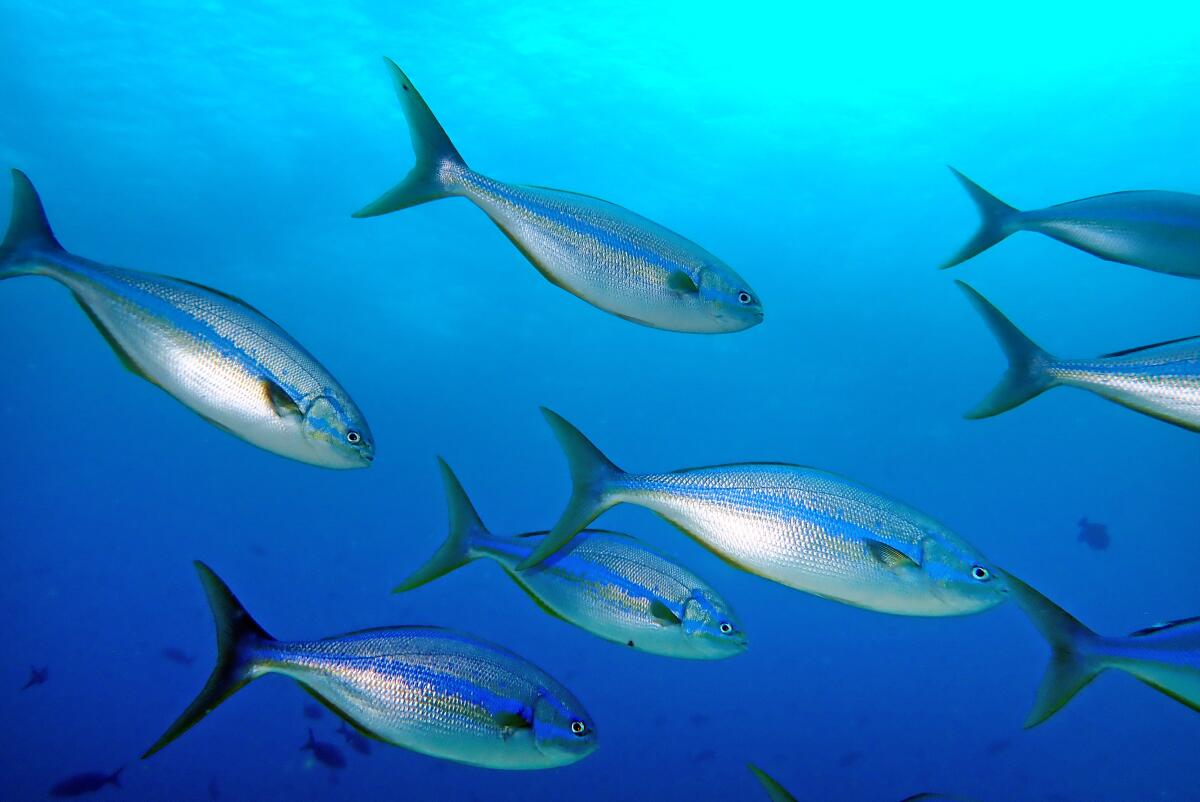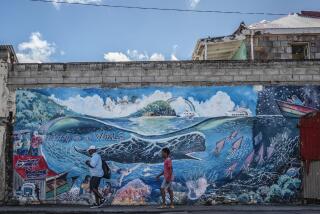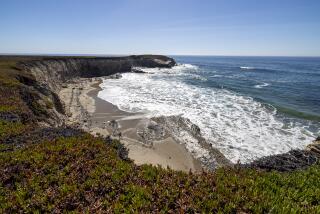Ecuador expands protected area around Galapagos Islands, providing safe passage for marine life

- Share via
Ecuadorean President Guillermo Lasso announced Friday that his government will expand protected waters off the Galapagos Islands to include a migratory corridor for sharks, turtles, fish and marine mammals.
The presidential decree will create more than 23,000 square miles of newly protected ocean around one of the planet’s most biodiverse marine ecosystems — a place where penguins and tropical fish swim with sea turtles and sea lions, as migrating hammerheads and tuna maneuver through the cold waters to mate, spawn and feed. The protections will extend north to Costa Rica’s southern maritime border.
The new reserve will “protect the submarine mountains” that extend northeast of the Galapagos archipelago toward Costa Rica’s Cocos Island, and keep long-lining and other fishing out of an area that animals use as a “subway” to traverse this environmentally rich area, said Gustavo Manrique, Ecuador’s environment minister.
The new area will expand the 51,352-square-mile Galapagos Marine Reserve by nearly 50% and bolster a chain of nature reserves that nations including Costa Rica and Panama have built along the Pacific coast.
“It’s remarkable and incredible how these nations have come together to build this marine network,” said Matt Rand, senior director of marine habitat protection for the Pew Charitable Trusts.
Forming these protected areas has been a focus of Lasso, who was elected president last year.
Ecuador has one of the largest Pacific fishing fleets in South America and is the largest tuna producer in the Western hemisphere, accounting for roughly 4% of the world’s total tuna catch.
“This decree is an incredible precedent,” said Norman Wray, former president of the Governing Council of the Galapagos, noting that the fishing industry worked with the government to create the reserves.
It also “helps to reduce fishing pressure over the Marine Reserve of the Galapagos,” he said.
In the summer of 2020, more than 300 Chinese fishing vessels — including processing ships, tankers and industrial-sized boats that hold 1,000 tons of catch — were spotted fishing along the border of the reserve.
The reserve has become a shelter and nursery for a wide variety of sea life, protecting fish, sharks and rays from over- and incidental fishing, high-volume shipping traffic, and pollution. As a result, it is also a place where the fishing is good — and boats wait around the perimeter to catch some of that bounty as animals migrate out.
“That’s how it should be,” said Rand of the Pew Charitable Trusts. “A healthy ecosystem is going to produce fish. It’s good for biodiversity and it’s good for a sustainable fishing fleet.”
More to Read
Sign up for Essential California
The most important California stories and recommendations in your inbox every morning.
You may occasionally receive promotional content from the Los Angeles Times.











